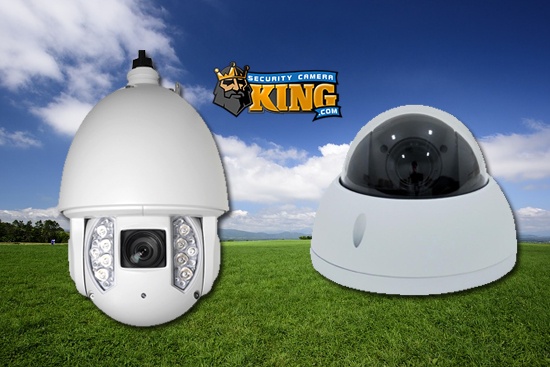ePOE – Extended Power Over Ethernet
Hey Everyone, Joe here- and today we have a combination article and video for you about POE- or extended power over ethernet. We’ve been talking a lot about POE lately as part of a series of articles and videos covering the various technologies available. In our video accompanying this article, we do part of our filming on location at a local neighborhood in our area. This neighborhood uses our cameras and recorders. However, what makes this location special is the size of the neighborhood. Because of the sheer size of the grounds of the neighborhood, solutions are needed to push past the limits of standard POE. Before we dive right into the video, and why ePOE is such a great benefit on situations like large areas to cover, let’s rehash what POE is and what it provides in the first place…
POE is an acronym that stands for “power over ethernet”. It is used to supply electrical power and a data conduit to IP cameras, also known as network cameras, all over a single cat5e or cat6 ethernet cable. It really is an incredible option that has changed the game as it pertains to reducing overhead installation costs for both labor and materials for CCTV systems. There may be some issues when trying to use POE for huge distances though, and that’s where ePOE comes into play. Watch the video, and follow along with the article transcript below to get all the details!
So as mentioned above, we now know and understand POE. The cameras on the pole at the beginning of our video that you see before we begin walking, are powered using a technology called ePOE. This is short for “extended power over ethernet”. As it is implied, ePOE is a variation of standard POE. Now you may already know that POE is used very commonly today in the network and IP camera world. What makes POE so useful is that you can supply both power, and data connectivity to any POE capable camera over a single Cat5e, or Cat6 Ethernet cable. This makes installations fairly simpler and more cost-effective than running separate cables for audio/video connectivity and power. Good stuff right? But not without its own limitations.
See as great as standard POE is, it can only go so far. Distance for a normal, standard POE connection is limited not by the power it can supply, but by the data regular ethernet connections are able to support. In the most ideal conditions, regular ethernet is only going to carry data without loss up to 100 meters.
Even though the limit is on the data side of Poe, this still creates a power issue because one single cable is used to transmit both power and data. Thus the limitation had to be overcome in order for data, and power, to be viable longer than 100m over ethernet. That’s where ePOE comes into play.
In the video, when we stop and turn around after taking a little walk well l have traveled a distance of approximately 630 meters – or 1900 ft, from where that camera we started from was, from one camera pole to the next. additionally, another 300 feet beyond the final camera pole we would arrive at the power node for these cameras.
Zooms out to faux-map
As mentioned before, we walked from here indicator at the start, to here, an indicator of finish which was a total distance of x meters. That distance far exceeds the 100 meters / 300 feet that standard POE is even able to reach, and we’re able to do that all because of the awesome power of ePOE. That’s because ePOE is capable of pushing the necessary data, and up to 48-53 volts of power, out to a whopping 800 meters- that’s half a mile of data and power! Of course, in order to take advantage of ePoe you’ll need the right technologies.
You’ll first need an ePOE capable camera, as only cameras rated for ePOE can accept the ePOE connection. In order to use that camera you’ll have to run cat5e or cat6 ethernet cable from its ethernet port to either ePOE capable power source such as an ePOE switch, or an NVR with onboard ePOE ports!
Now its obvious that ePOE lets you run a cable a lot farther, but what are the major benefits that result from this? Well, the first is cost. It can cost thousands of dollars per node, to run a new power location into a neighborhood to compensate for non ePoe based systems. Additionally, its now possible to convert existing COAX systems to IP using ePOE and EOC!!!
Thanks for checking out our article and video on ePOE!Check out the additional links for more info on some of these ideas! For any questions on product compatibility, availability or any other information don’t hesitate to give our Sales Pro’s a call at 561-288-5258 . Don’t forget to subscribe to our YouTube Channel for more Tutorials and CCTV info. Until Next time, Stay Safe!
Related: What’s the difference between DVR and NVR?
Related: What’s the difference between H264 and H265?
Related: IP PTZ Security Cameras – All There is to Know
Related: Resolution, and why does it matter?
Related: What are active deterrence cameras?
Find Us On: Facebook | Twitter | YouTube












